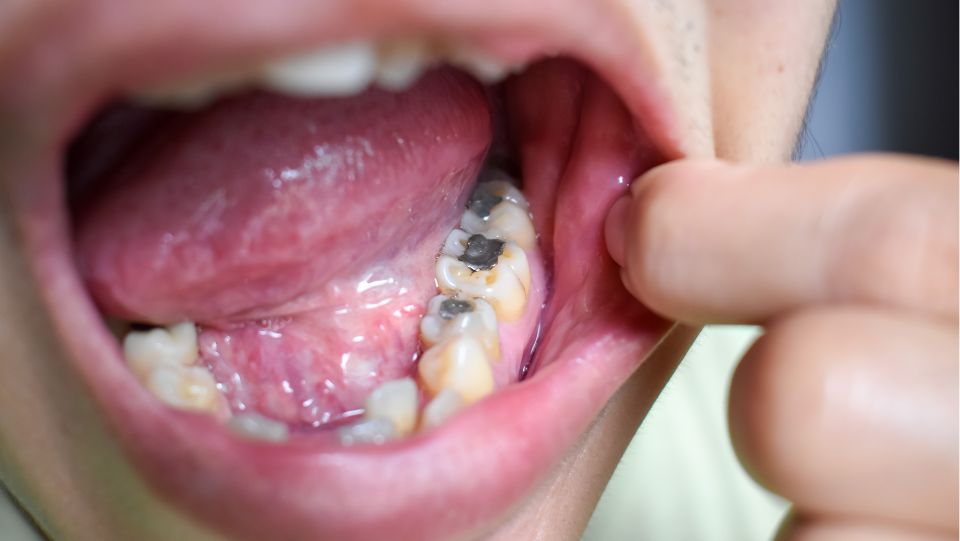For centuries, dental fillings have been used to save teeth. They are necessary because teeth are prone to cavities of all shapes and sizes that require dental fillings. A variety of methods and materials are available for tooth fillings, each with its own set of advantages and disadvantages.
Dental amalgam is a type of dental filling used to repair cavities caused by tooth decay. Dentists have used it for a long time, and it is the most thoroughly investigated material for filling cavities. The general public refers to amalgam dental fillings as “silver fillings” because of their silvery appearance.
Amalgam is a mixture of metals made up of mercury and alloys of silver, tin, and copper, with mercury accounting for 50% of the total. You may be wondering why this is significant to mention. Simply put, mercury is one of the most toxic substances known to human beings.
Dental amalgam exposes dental professionals, dental staff, and dental patients to mercury vapour emissions, which is why we stopped using it in 1987 at SHDC and have used precautionary procedures to minimise our exposure to this harmful substance.
Dental amalgam and arthritis diagnosis
There has been an increase in the number of cases of arthritis in both men and women around the world. The CDC predicts that by 2040, the number of individuals living with arthritis will have risen to more than 78 million.
Arthritis is a prominent cause of disability, characterised by joint pain, aching, stiffness, swelling, and other physical and emotional side effects. It is not a single disease, but rather a collection of symptoms. Working-age adults—those between the ages of 18 and 64—make up around half of the people with arthritis.
Thousands of studies conducted worldwide have reported on a significant relationship between the number of dental amalgam filling surfaces and the diagnosis of arthritis.
The link between dental amalgam fillings and the arthritis rate.
The International Academy of Oral Medicine and Toxicology (IAOMT) is a global network of dentists, health professionals, and scientists who research the biocompatibility of dental products. They have been raising awareness of research linking cases of arthritis to dental amalgam.
In a new study, researchers David and Mark Giers discovered that individuals with dental amalgam fillings had a higher risk of developing arthritis. They examined data from the 2015-2016 National Health and Nutrition Examination Survey (NHANES), including:
- demographics,
- dental exams,
- arthritis diagnosis.
- Data about the patient’s type of dental filling
With this information, the researchers were able to discover that individuals with silver-coloured mercury amalgam fillings had a higher incidence of arthritis than those with tooth-coloured composite fillings.
They found that adults with 4 to 7 dental amalgam filling surfaces have the highest incidence of arthritis because the vapour from the fillings is continuously emitted and easily absorbed into the human body.
What are the dangers of mercury exposure?
Researcher David Geier describes mercury as a highly toxic substance to humans. He emphasises that every single molecule of mercury poses serious health risks and can be harmful to human cells.
He goes on to say that mercury is a poison that cannot be measured by dose but rather by clinical symptoms because it manifests in the body as a disease that can damage any part of the body, including the brain, kidneys, heart, and, as studies have shown, the joints.
Once mercury is absorbed into the body, it begins to interfere with the normal functioning of a wide range of important biological compounds, including proteins, hormones, enzymes, enzyme inhibitors, amino acids, red blood cells, as well as muscle and nerve cells.
At SHDC, we take great care in choosing dental filling materials that are strong, biocompatible, aesthetically pleasing, and long-lasting. We also ensure that we minimise your exposure to mercury during the removal of old amalgam fillings, as we are aware of the negative impact that mercury can have on your health.
David and Mark Grier emphasise in their research that people must understand these two points about the health risks associated with mercury exposure.
- Mercury, unlike other elements, cannot be broken down, chewed, modified, or deactivated, which is why it is so dangerous to the human body.
- Some individuals are more susceptible to the health risks associated with mercury exposure than others.
Therefore, susceptible groups are cautioned about the harmful health effects of dental amalgam that continually emits mercury into their bodies.
Who should avoid getting dental amalgam fillings?
In September 2020, the Food and Drug Administration (FDA) updated the risks of dental amalgam fillings for susceptible groups
Mercury exposure may pose a greater health risk in the groups of people listed below, who may be more susceptible to the adverse effects of mercury.
- pregnant women;
- women planning to become pregnant;
- nursing women and their newborns and infants;
- children; people with neurological diseases such as multiple sclerosis, Alzheimer’s disease, or Parkinson’s disease;
- people with impaired kidney function;
- and people with known heightened sensitivity (allergy) to mercury or other components
If I am concerned about the mercury in dental amalgam, should I have my fillings removed?
At SHDC, we advise our patients that the decision on whether to proceed with removal is a balance between the constant exposure and release of mercury filling throughout a lifetime versus the one-time exposure of removal.
We have recently revised our procedures to comply with the SMART Safe Mercury Amalgam Removal Technique (the SMART Protocol), as approved by the National Health and Medical Research Council, due to the numerous health risks associated with the removal of mercury amalgam fillings (NHMRC).
We minimise the risk of mercury contamination for our patients and staff by adhering to precautionary procedures and ensuring that the materials used for dental restorations do not interfere with the body’s normal functioning.
_____
Research and References
1. Dental Amalgams and the Incidence Rate of Arthritis among American Adults
https://pmc.ncbi.nlm.nih.gov/articles/PMC8138300/2. Health effects of dental amalgam exposure: a retrospective cohort study
https://academic.oup.com/ije/article/33/4/894/686119
3. The Australian public’s perception of mercury risk from dental restorations
https://pubmed.ncbi.nlm.nih.gov/9586469/
4. Changes in health complaints after removal of amalgam fillings
https://pubmed.ncbi.nlm.nih.gov/21649749/
5. Mercury exposure and risks from dental amalgam in the US population, post-2000
https://pubmed.ncbi.nlm.nih.gov/28449763/



